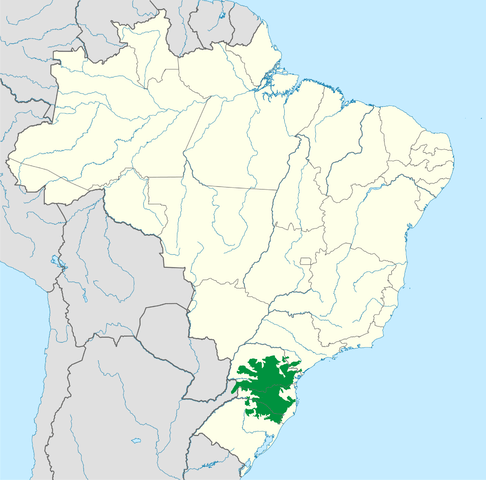Beneath the Canopy: Exploring Brazil's Araucaria Moist Forests
Nestled within the mountainous regions of Southern Atlantic Brazil, the Araucaria moist forests ecoregion is a testament to the Atlantic Forest biome's ecological richness. This coniferous forest ecoregion is characterized by its diverse landscapes, unique flora, and rich biodiversity.
Beneath the Canopy: Exploring Brazil's Araucaria Moist Forests
Nestled within the mountainous regions of Southern Atlantic Brazil and bleeding into northeastern Argentina, the Araucaria moist forests ecoregion stands as a testament to the ecological richness of the Atlantic Forest biome. This coniferous forest ecoregion, spanning an area of approximately 216,100 square kilometers (83,400 square miles), is characterized by its diverse landscapes, unique flora, and rich biodiversity.
Geographical Features
The Araucaria moist forests ecoregion sprawls across the Brazilian states of São Paulo, Paraná, Santa Catarina, and Rio Grande do Sul, extending into the Misiones Province of northeastern Argentina. Bordered by the Upper Paraná Atlantic forests to the north and west, the Pampas to the south, and the Serra do Mar coastal forests to the east, this ecoregion is characterized by its mountainous terrain and plateaus. Rising above 500 meters (1,600 feet) in elevation, with peaks reaching up to 1,600 meters (5,200 feet) on the Serra da Mantiqueira, the Araucaria moist forests boast a varied topography shaped by millennia of geological processes.
Climate
The Araucaria moist forests experience an oceanic temperate climate, marked by mild summers, frequent frosts during winter, and significant snowfall in the highest areas. Annual precipitation ranges from 1,300 to 3,000 millimeters (51 to 118 inches), with rainfall distributed throughout the year, ensuring the ecoregion's lush greenery and thriving ecosystems.
Flora
This ecoregion is renowned for its evergreen subtropical moist forests, characterized by a diverse canopy dominated by species such as Ocotea pretiosa, Ocotea catharinense (Lauraceae), Campomanesia xanthocarpa (Myrtaceae), Mimosa scabrella, and Parapiptadenia rigida (Leguminosae). However, what truly distinguishes the Araucaria moist forests is the presence of the Brazilian araucaria (Araucaria angustifolia), which forms an emergent layer towering up to 45 meters (148 feet) in height. These forests serve as a living testament to the ancient mixed coniferous and broad-leafed forests that once blanketed the region, harboring many taxa unique to the Antarctic flora.
Fauna
The Araucaria moist forests are a botanical wonder and a haven for diverse fauna. This ecoregion, recognized as an important endemic bird area, is home to many avian species, including the threatened red-spectacled parrot (Amazona pretrei) and the charismatic brown howler monkey (Alouatta guariba). These forests teem with life, offering refuge to various mammals, birds, reptiles, and amphibians, each playing a vital role in maintaining the delicate balance of this intricate ecosystem.
Conservation Status
Despite its ecological significance, the Araucaria moist forests face significant deforestation and habitat fragmentation threats. Over the years, these forests have dwindled, with approximately 87% of their original extent lost to human activities. While some efforts have been made to preserve remaining habitat patches, the ecoregion's protection status remains precarious. Urgent conservation measures are needed to safeguard the Araucaria moist forests and ensure the continued survival of its unique biodiversity for generations to come.
In conclusion, the Araucaria moist forests ecoregion is vital to Brazil's natural heritage, representing a unique ecosystem within the Atlantic Forest biome. Despite facing significant threats and habitat loss, its importance for biodiversity conservation cannot be overstated. Efforts to protect and preserve this ecoregion are imperative to safeguarding its rich flora and fauna for future generations.

Map depicting the location of the Araucaria Moist Forests ecoregion (in green).
